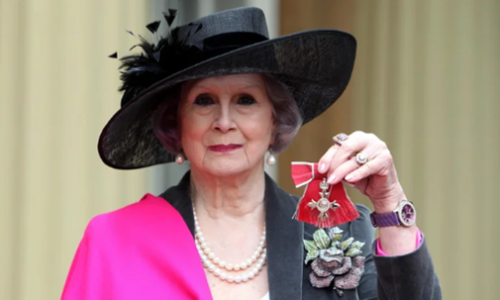Gender matters
Professor (Emeritus) Kenneth Norrie’s Initial Thoughts on the Supreme Court’s Transgender Decision For Women Scotland Ltd v the Scottish Ministers [2025] UKSC 16 - posted on 9 May 2025
A second guest post on this case, entitled Gender doesn't matter, was penned by the barrister Naomi Cunningham and posted on 15 May 2025. Further information about these two posts can be found in the introductory text to Cunningham's post.

The Supreme Court’s recent transgender decision deserves very careful analysis of its detailed reasoning in order properly to understand how they came to their conclusions and what its implications might be. Such an analysis will need to wait another day, but I presume here to offer some initial thoughts on a judgment that will profoundly transform the lives (and not for the better) of one of the most disparaged groups in our society.
At its heart, the case revolved around what was presented as an inconsistency between the Gender Recognition Act 2004, which provides a mechanism for a person biologically of one gender to be legally recognised as being of the other gender, and the Equality Act 2010, which prohibits discrimination, harassment and victimisation against various protected categories – including on the basis of (inter alia) disability, gender, sexual orientation and trans identity. The two Acts focus on two very different (but overlapping) groups of transgender people. The 2004 Act gives legal consequences to trans people with a Gender Recognition Certificate (GRC); the 2010 Act seeks to protect all trans people, whether or not they have a GRC.
The Gender Recognition Act 2004, s.9(1) states unambiguously that a person with a GRC “becomes for all purposes the acquired gender”: so for more than twenty years now the legal definition of gender has not been entirely the same as the biological definition (just as the legal definition of “parent” is not entirely the same as the biological). The 2004 Act allows a person who is biologically a man to become (in law) a woman, and a person who is biologically a woman to become (in law) a man. Section 9(3) subjects this to various exceptions, including parenthood, gender-specific offences, and (may the good Lord Above protect us) succession to peerages (2004 Act, ss.12, 16 and 20).
But here is the thing with GRCs: the Supreme Court notes that the great majority of trans people do not hold one. It follows that there are far more trans people who gain benefit from the Equality Act than gain benefit from the Gender Recognition Act. Whatever the reason for this, only around 8000 GRCs have been granted in the last 20 years. As some holders have died since obtaining their certificates it follows that, in a country of around 70m, the chances of a cisgender person coming across a trans person whose biological gender differs from their legal gender, whether in the workplace, on the street, in a gym, a changing room or a toilet, or while interviewing for a seat on the board of a public body, is roughly one in 10,000: about the same, according to something on the Internet called Reddit, as the chances of finding a four-leafed clover.

The Supreme Court points out that s.9(3) has another qualification – the rule in s.9(1) that a person with a GRC has changed their legal gender is “subject to … any other enactment”. Now, there is nothing exceptional about a later Act of Parliament repealing or changing or qualifying an early Act of Parliament. But the Supreme Court, in what seems to me to be the weakest link in their argument, rejects the idea that the later Act is required to be explicit when it wishes to qualify the earlier Act, or needs to do so by necessary implication. Instead they assert (para.156), somewhat tendentiously and without much explanation, that s.9(3) will also disapply the rule in s.9(1) where the terms, context and purpose of a later enactment (in this case the Equality Act 2010) require this either because there is a clear incompatibility or because the later Act’s provisions would be rendered incoherent or unworkable: with touching faith in our politicians they say that “an interpretation that produces unworkable, impractical, anomalous or illogical results is unlikely to have been intended by the legislature” (para.160). The weakness in this line of reasoning is two-fold: the disapplication of s.9(1) of the 2004 Act by the 2010 Act effectively robs the 2004 Act of any substantive content, and the anomalies the Supreme Court identifies seem to me to be imagined rather than real. These points are explored more fully below.
So far, so unpersuasive. There is, however, a strong strand in the Supreme Court’s judgment as well, one that I struggle to find an answer to. The Court points out (paras.202-3) that the gatekeepers of single sex spaces cannot be expected to make an assessment of someone’s legal gender, because they can’t ask for the production of a GRC every time, for example, someone goes into the changing room in a gym or a clothing store. Likewise, public bodies designing internal policies to satisfy their Public Sector Equality Duty – or their duty under the Gender Representation on Public Boards (Scotland) Act 2018 – simply cannot do so if trans people fall into two categories (those with and those without a GRC) and the public body cannot tell them apart. This seems to be an inherent flaw in the 2004 Act, though we have lived with it these twenty years and no public body complained (the present case was raised by a well-funded gender-critical pressure group – which, with some chutzpah but without shame, complained that certain women-only groups, organisations and charities were under pressure from funders to include trans women (para.203)).
Throughout their judgment, the Supreme Court valiantly tries to limit the scope of its decision to the definition of “woman” within the Equality Act 2010, but the implication of that crucial limitation has been almost wilfully ignored. The Court lists a variety of provisions in the Act that, to them, only make sense if the word “woman” means biological woman: doing otherwise creates in their view the unacceptable anomalies that are the justification for disapplying the 2004 Act. However, most of these anomalies are found in examples of when the Equality Act states that the provision of single sex spaces or services would not breach the rules therein. It is not a breach of the Equality Act, for example, to provide single sex toilets, or wards, or hostels, or domestic violence refuges, or to provide gender-limited swimming spaces, or gender-specific medical services. The strict legal effect of the Supreme Court’s decision is that it is now not a breach to limit these spaces on the basis of biological sex.
But that does not mean that it is a breach to fail to limit such spaces on that basis. (That was the most important sentence in this blog).
In other words, both the Equality Act and the Supreme Court’s judgment allows every institution and public body to make its own decisions, and in making these decisions general human rights law, including the duties in the Equality Act to trans people, requires that they must do so proportionately. However, the practical effect of the judgment is to shift the onus from those claiming that allowing trans people with a GRC into single sex spaces is a breach, onto trans people (with a GRC) seeking to access single sex spaces.

What seems at first sight to be a more substantive anomaly, and one that greatly exercised the Justices in the Supreme Court, was that a trans man who becomes pregnant (such as Freddy McConnell, the appellant in R (McConnell) v Registrar General [2020] EWCA Civ 559, shown above) would appear to have no protection against pregnancy discrimination because the Equality Act 2010 only protects “pregnant women”: if the likes of Freddy McConnell were legally a man (as the Gender Recognition Act 2004 says he is) then there would be nothing to prevent his employer sacking him for falling pregnant. But to me the crucial word in the phrase “pregnant woman” – the part that activates the special protections – is “pregnant” rather than “woman”. I suggest that the obligation imposed on courts by s.3 of the Human Rights Act 1998 requires the Equality Act’s various references to pregnancy and to a “pregnant woman” to be interpreted to mean “anyone who is pregnant”, for no legitimate aim is furthered by interpreting it to exclude some pregnant people. There is no anomaly here. It is worth noting that in the pre-Gender Recognition Act case of Bellinger v Bellinger (2003) UKHL 21 the House of Lords felt obliged to issue a declaration of incompatibility rather than itself extend the term “woman” to include a trans woman since such an extension would fundamentally alter the nature of the marriage relationship. To interpret the phrase “pregnant woman”, to include a pregnant trans man does not fundamentally alter the fact of pregnancy and the need to avoid pregnancy-based discrimination.
(As an aside, it may be remembered that the House of Lords in Bellinger said the matter of changing the law of marriage was for Parliament, which speedily responded with the Gender Recognition Act 2004. Today’s politicians, across the political spectrum and across the United Kingdom, unanimously welcomed the “clarity” provided by the Supreme Court’s judgment in April 2025, which is unsubtle code to signal their determination not to touch the issue with a bargepole).

Dr April Ashley, MBE

Professor Stephen Whittle, OBE
Another feature of the judgment, reflecting the arguments of the appellants, is the very gendered focus on the rights of cisgender women. All the arguments of the appellants were based around the fear they assert that cisgender women have of trans women who carry in each of their cells a spare Y chromosome. The MBE holder (honoured by the Palace for services to transgender inclusion) shown above is demonised as a danger to women with XX karyotype. The same consequences of this focus on cell-structure must follow for trans men, even although they tend to be able to “pass” more readily. What this means is that the bearded and balding holder of the OBE shown above (honoured by the Palace for services to transgender inclusion) may be required by institutions’ and public bodies’ policies to use female toilets and changing rooms, and the appellants assume that cisgender women are comfortable with sharing these facilities with him because, like them, his karyotype is XX.
Since the judgment was issued, public bodies up and down the country have interpreted the choice they have to make as an obligation to make it one way, and many bodies have already indicated that they are changing their policies to restrict single-sex spaces and activities to those of the appropriate biological gender. Sports bodies have been amongst the first to change their policies. Both the Scottish Football Association and the English Cricket Board have been reported in the press as declaring that, with immediate effect, the women’s games they are responsible for will in future be restricted to biological women. That replaces their earlier policy of determining the issue on a case-to-case basis and prohibiting only those persons with an acquired gender whose biology gives them a competitive advantage – which is, be it remembered, the approach permitted by s.195 of the Equality Act 2010. It is important to understand that this is their policy decision, which is lawful (in the sense that it does not breach the Equality Act 2010) but not mandatory (in the sense that it is necessary to comply with a positive obligation imposed by that Act). The Supreme Court judgment allows, but does not require, such changes in policy. It follows that public bodies can continue to be trans-inclusive – if they so choose.
So what is left for a trans person with a GRC? A trans person who has legally changed their gender will be able to have official documentation such as passports and driving licences in their new gender (though in practice that was possible even before the Gender Recognition Act 2004); they will be able to marry in their new gender. And, as the Supreme Court emphasised, they are still protected against discrimination, harassment and victimisation, though that applies irrespective of whether they have a GRC. The appellants tried to argue the Gender Recognition Act out of existence, by claiming that it was no longer relevant since marriage has been made gender-neutral and discrimination protection is granted in any case to all trans people. The Supreme Court rejected this argument (at para.100), pointing out that the Act continues to recognise trans people’s personal autonomy and dignity. However, the 2004 Act was designed to be much more than simply an expression of goodwill towards trans people: it was designed to have substantive legal effect on the very status of any holder of a GRC. The effects of the 2004 Act will be rendered nugatory if institutions and public bodies choose (as they now may) to ignore its terms.
Underlying the decision of the Supreme Court is how the Justices conceive trans people. Throughout, they make the assumption (made explicit, for example, at para.221) that a trans woman with a GRC is a “male person living in the female gender” and a trans man is a “woman living in the male gender”. It is telling that, right at the start of the judgment when they define their terms, they say that they are using the term “biological sex” to describe “the sex of a person at birth” (para.7), i.e. before any legal change. So a trans man (for example) is nothing more than a woman who pretends to be a man, and what the Gender Recognition Act did was to allow the law, for increasingly limited purposes, to treat that woman as it would treat a man. Transgenderism is reduced to nothing more than a rather unfortunate state of mind, to be pitied – and protected from discrimination – but called out for what it is. This is the complete rejection of how most trans people conceive transgenderism: that the true definition of sex lies beyond the merely physical (just as true parenthood lies beyond the mere passing of genes), that the conscious mind is more important than animal cell structure.
To me, the most disappointing thing about this case is the indulgence it shows to the subversion of the Equality Act 2010. That Act was designed to minimise discrimination, harassment, and unfair treatment to various specified categories, many of which overlap. It was designed to expand compassion and kindness and understanding for historically marginalised and disadvantaged groups within society. But instead of embracing that policy objective the 2010 Act has been used by the appellants (and their funders) to create monsters from whom decent people (those whose chromosomal makeup is consistent with their social reality) need to be protected. The Act has been used to limit rather than to expand compassion and understanding.
Could the Supreme Court have decided differently? Well yes, obviously, since the Court of Session from whose judgment the appeal was taken did so (at both levels). The tragedy is that the Supreme Court accepted the appellant’s argument that what was at stake in this case was a clash of incompatible rights – that granting some rights to one group took away the rights of another group, as if rights were a finite resource. The Justices approached their task as if it were to determine which right won and which lost, rather than to seek a means to reconcile different interests and harmonise the rights of all. Had a reconciliation approach been adopted (“how can these two rights exist compatibly with each other?”) their task would have been very different. It would have required the Supreme Court to be much more questioning about the reality of the threat posed to cisgender women from transgender women: the risk, that is, to women with a chromosomal makeup of XX from women (defined by law as such) with a chromosomal makeup of XY.
For example, there has been much focus in the press about single-sex toilets and the need to protect cisgender women from the imagined indignities of gender-neutral toilets. The Court ought to have asked, what is the real danger here, and why are XX people able to shrug it off when they use unisex toilets in aeroplanes, trains – and indeed in their own homes and the homes of their friends – but not in public buildings? I accept that XX people are entitled to their dignity and I can just about understand how they might consider that dignity compromised by being in a changing room with a person with an XY karyotype in their cell structure. But remembering that they have a 1 in 10,000 chance of that actually happening, that indignity is pretty marginal, and entirely self-imagined.
And the Court ought to have compared that minimal risk with the indignity suffered every single day by trans people. I am not a transgender person, but I have walked down the street with trans people and I have been conscious of the stares, the looks of contempt, the whispers, the pointing, occasionally the overt expressions of hostility, that trans people have to put up with every moment of their lives outside their own homes. I have been to the theatre with a trans person who, conscious that they look like a trans person, always leaves the auditorium five minutes before the interval in order to use the toilet without causing anyone embarrassment. These are hurts to the dignity of the individual that are overwhelmingly more real and genuinely more harmful to emotional wellbeing than anything suffered by cisgender women worried about the 1 in 10,000 chance that there might be a legally but not biologically defined woman peeing in the next cubicle. Perhaps their real fear is that if they do, they will never find that four-leafed clover.
Had the Supreme Court attempted a comparative analysis of the dignity rights of the two groups that the appellants claimed were in irreconcilable conflict, they could have approached the matter with more realism, with more generosity to a group substantially more vilified today than biological women, and indeed with far more understanding and basic human kindness. The Court failed in its duty as a public body subject to the obligation in s.149(1)(c) of the Equality Act 2010 to exercise its functions having due regard to the need to “foster good relations between persons who share a relevant protected characteristic [in this instance, being transgender] and persons who do not share it”. Their decision exacerbates bad relations between the trans community and those who insist that gender and sex are biological matters only. Likewise public bodies who choose to exclude trans people are failing in their s.149 duty. As well, they are exhibiting a lack of basic kindness to those who are different from themselves – and adding to vilification in a society that surely already has too much. As the English novelist Clare Pooley famously said, if you can choose to be anything in this world, choose to be kind.